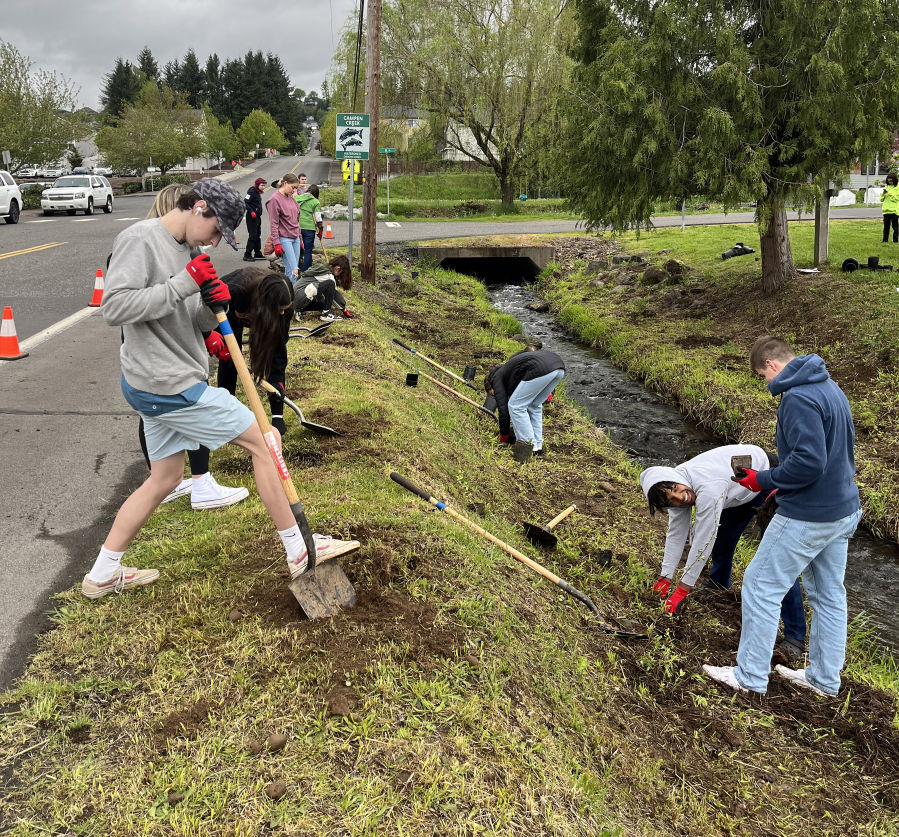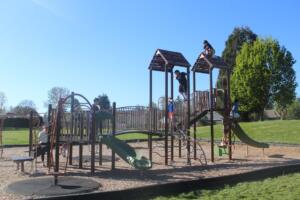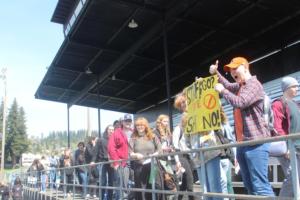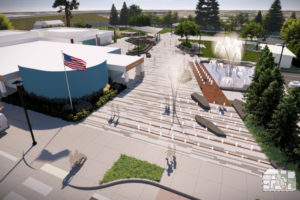The city of Washougal, Watershed Alliance of Southwest Washington (WASW) and Washougal School District recently joined forces to enhance the riparian habitat at Campen Creek.
With the help of City and WASW employees, 64 Washougal High School Advanced Placement environmental science students planted 242 native plants, including slough sedge, spreading rush, Douglas spirea, stink currant, Douglas aster, riverbank lupine, and kinnikinnik, along a stretch of the creek at the intersection of 39th and “M” streets, near the Washougal High campus, on Friday, May 5.
“It was an amazing experience to participate alongside the Washougal High School students and to hear about their lesson plan that focused on the benefits of a healthy riparian ecosystem,” said Sean Mulderig, the City’s stormwater program supervisor. “I am grateful for the collaborative effort with the Water Alliance, and I found it very fulfilling to help provide this hands-on experience for the students. It was especially rewarding to see some of them plant their first native species.”
City staff said the collaborative project aimed to “provide a hands-on learning experience for the students” and “complements the City’s broader community engagement efforts (by fostering) a sense of shared responsibility and collaboration in promoting a sustainable and healthy environment for all.”
The City planned to perform streambank repair work at Campen Creek and obtained a hydraulic project approval permit, which mandates recipients to plant native riparian species along streambanks to mitigate any potential environmental impacts, from the Washington Department of Fish and Wildlife (WDFW) in September 2022.




